We all know how great a good night’s sleep feels — and this goes for your children as well. Sleep is important to children’s overall well-being and essential to their growth and good health. A good night’s sleep allows children to wake up feeling refreshed physically and mentally. Consistent and quality sleep helps children stay alert and focused during the day. It can increase their ability to concentrate, to remember what they learn, to problem solve and to enjoy normal physical activity. On the flip side, children who do not get enough sleep are likely to be moody, irritable, easily frustrated, and act more angry or sad in social interactions.
Clearly, sleep is very important for children’s functioning. So what happens while we sleep? Throughout the night, the body moves through sleep cycles — transitioning between deep restorative sleep, lighter stages of sleep and dreaming. During sleep, muscles and skin are repaired and grow, memories are organized, and growth- and appetite-regulating hormones are released. Getting adequate sleep also helps protect against illness. Consistent and quality sleep allows adults and children to feel mentally and physically refreshed and more prepared to engage in daily activities.
If bedtime is a struggle or if your child experiences sleep-related difficulties, you are not alone! The proportion of school-age children with sleep difficulties ranges from 20 percent to 43 percent. Sleep-related problems or struggles at bedtime often lead to sleep-deprived children and frustrated parents. Parents and other adult caregivers play an important role ensuring that children get adequate sleep and develop good sleep habits — this guide provides information about normal sleep patterns for children of all ages, tips for promoting good sleep habits and information to address sleep-related problems.
Sleep needs and tips
Newborns (birth to 6 months)
- Babies go through a complete sleep cycle about every 50 to 60 minutes, which means they are often in a light sleep stage and wake up often during the night.
- Newborns experience many periods of wakefulness and sleepiness throughout a typical day. They may sleep for just a few minutes or for several hours at a time.
- Infants are active during sleep and can even appear to be restless, often twitching their arms and legs, making noise, smiling and sucking.
- Observe your baby’s sleep patterns and identify signs of sleepiness such as fussiness or yawning.
- Babies sleep safer on their backs. To decrease the risk of Sudden Infant Death Syndrome (SIDS), the American SIDS Institute recommends placing infants to sleep on their backs for naps and at nighttime, even though they may sleep more soundly on their stomachs. Infants who sleep on their stomachs or sides are at a higher risk for SIDS than infants who sleep on their backs.
Infants (6 months to 1 year)
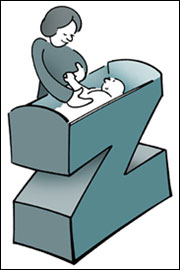 Put your baby in her crib when she is drowsy, but not asleep. This will teach your baby to self-soothe and fall asleep on her own.
Put your baby in her crib when she is drowsy, but not asleep. This will teach your baby to self-soothe and fall asleep on her own.- If your baby cries or wakes up during the night, provide comfort without removing her from her crib.
- Develop a daily schedule and routine for nap time and bedtime — and then be consistent with your baby’s schedule and stick with your routine.
Toddlers (1 to 3 years)
- The need for sleep begins to decrease during this time. Most toddlers sleep 10 to 13 hours a night.
- Maintain your child’s schedule with a regular bedtime and sleep routines.
- Be consistent with your child’s bedtime routine. For example, read the same number of books each night and limit the number of times your child requests a drink of water or gets out of bed.
- Encourage the use of a night light or security object, such as a blanket or stuffed animal. This will help your child feel safe and secure at bedtime.
Preschoolers (4 to 5 years)
- The need for sleep continues to decrease as your child gets older. Preschoolers need 10 to 12 hours of sleep each night.
- Children usually require just an afternoon nap (usually after lunch) that lasts one or two hours.
- As children’s imaginations develop, nighttime fears or nightmares may become more common. Discuss your child’s fears and anxieties and give her reassurance.
- Do quiet activities before bedtime, such as reading stories or listening to soft music to help your child transition to sleep time.
School-age children (5 years and older)
 Adjust your child’s bedtime according to his age and sleep needs, but maintain a consistent routine and schedule. School-age children need about 10 hours of sleep each night.
Adjust your child’s bedtime according to his age and sleep needs, but maintain a consistent routine and schedule. School-age children need about 10 hours of sleep each night.- Turn off the TV. Watching television before bedtime makes it difficult for children to fall asleep.
Adolescents
- Adolescents need less sleep than school-age children — about nine hours every night.
- When a child reaches adolescence, her brain’s sleep cycle (circadian rhythms) shifts. Think of circadian rhythms as the body’s clock or internal indicator of when it’s time to sleep and wake up. As a result of the shift in circadian rhythms, adolescents typically go to sleep and wake up later than younger children.
- It is important to be aware of sleep deprivation in adolescents. Signs include:
- Naps that last longer than 45 minutes;
- Sleeping later (two or more hours) on the weekends;
- Difficulty waking up in the morning;
- Trouble staying awake during the day; and
- Difficulty concentrating.
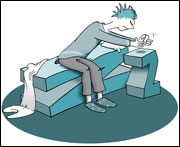 Lack of sleep can change adolescents’ metabolism and put them at an increased risk for obesity. Insufficient sleep can also make driving more dangerous. Teen drivers are one of the highest-risk groups for driving accidents due to drowsiness.
Lack of sleep can change adolescents’ metabolism and put them at an increased risk for obesity. Insufficient sleep can also make driving more dangerous. Teen drivers are one of the highest-risk groups for driving accidents due to drowsiness.
Average sleep needs by age
University of Michigan Health Systems
| Age | Nighttime sleep (hours) | Daytime sleep (hours) | Total sleep (hours) |
|---|---|---|---|
| 1 month | 8.5 (many naps) | 7.5 (many naps) | 16 |
| 3 months | 6 to 10 | 5 to 9 | 15 |
| 6 months | 10 to 12 | 3 to 4.5 | 14.5 |
| 9 months | 11 | 3 (2 naps) | 14 |
| 12 months | 11 | 2.5 (2 naps) | 13.5 |
| 18 months | 11 | 2.5 (1 to 2) naps | 13.5 |
| 2 years | 11 | 2 (1 nap) | 13 |
| 3 years | 10.5 | 1.5 (1 nap) | 12 |
| 4 years | 11.5 | 0 | 11.5 |
| 5 years | 11 | 0 | 11 |
| Adolescents | 9 | 0 | 9 |
*These numbers are recommended averages. Children vary in the amounts of sleep they need.
Helpful hints
Do
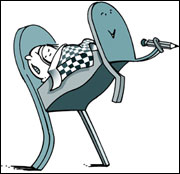 Establish and be consistent with a routine. Routines are important for children — knowing what to expect will help them develop self-control and independence.
Establish and be consistent with a routine. Routines are important for children — knowing what to expect will help them develop self-control and independence.- Bedtime and nap routines should be a positive experience for adults and children. Going to sleep should be a loving and secure time.
- Allow children time to transition to sleep. Plan activities to help your child calm down, such as reading stories, listening to quiet music or singing lullabies.
- Try to read the same number of books each night and limit the number of times your child requests a drink of water or gets out of bed.
- Allow your child to have a security item, such as a stuffed animal, blanket or night light.
- Discuss your children’s fears and anxieties about bedtime. Provide love and reassurance.
- Adjust naps during the day to support your child’s bedtime schedule.
Don’t
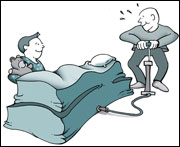 Never soothe an infant to sleep in her crib with a bottle of juice, milk or formula. Water is okay, but other liquids can cause tooth decay.
Never soothe an infant to sleep in her crib with a bottle of juice, milk or formula. Water is okay, but other liquids can cause tooth decay.- Do not fill your child’s bed with toys. The bed should be a peaceful place for rest and sleep, not play. A special stuffed animal or blanket is okay.
- Never use bedtime as a punishment or threat. Bedtime should always be a positive experience.
- Do not give your child food and drink with caffeine, which is a stimulant. Even if you give your child caffeine earlier in the day, it can disrupt his or her ability to fall asleep at night. Commonly consumed foods and drinks containing caffeine include:
- Coffee
- Tea
- Soft drinks
- Chocolate milk
- Cocoa beverages
- All types of chocolate
- Chocolate syrup
- Do not allow a TV in your child’s bedroom and turn off the TV at least one hour before bedtime. Television viewing immediately before bedtime has been linked to poor sleep.
Sample bedtime routine
- Have a light snack.
- Take a bath.
- Put on pajamas.
- Brush teeth.
- Read a story.
- Make sure the room is quiet and at a comfortable temperature.
- Put your child to bed.
- Tuck your child under the covers, smile and reassure your child that you’ll see her in the morning.
- Say "good night" and leave.
 Follow a bedtime routine every night. Make bedtime a positive and relaxing experience without TV or videos. Television viewing prior to bed can lead to difficulty falling and staying asleep. Save your child’s favorite relaxing activities until before bed and do them in her bedroom.
Follow a bedtime routine every night. Make bedtime a positive and relaxing experience without TV or videos. Television viewing prior to bed can lead to difficulty falling and staying asleep. Save your child’s favorite relaxing activities until before bed and do them in her bedroom.
Dealing with problems
Bed-wetting
The occasional bed-wetting accident is a normal experience for young children — especially as they transition toward being fully toilet trained. However, frequent bed-wetting (twice a week after the age of 5) can be a problem for some children.
Bed-wetting is more common in boys than in girls. It occurs in 10 percent of 6-year-olds, 7 percent of 7-year-olds and 5 percent of 10-year-olds. Let your child know that bed-wetting is a common problem for children his age and give reassurance that it is a problem that he has no control over and will eventually outgrow. Although it is important to discuss bed-wetting with your child, do not make it a big issue. Odds are, if you don’t make it a big deal, neither will your child. Also be sure that other family members don’t tease the child who wets the bed. Using a plastic cover under the sheets is an easy way to protect the mattress and make clean up easier.
To help eliminate bed-wetting, carefully monitor your child’s fluid intake in the late afternoon and early evening. Make sure your child uses the toilet regularly throughout the day and especially before bed. You may even try waking up your child after he has been sleeping for a couple of hours to use the bathroom. If your child does not stop wetting the bed after one to three months of monitoring fluids and waking up to use the toilet there are other options you can consider.
Talk to your pediatrician about bed-wetting alarms. There are several types of alarms for different kinds of bed-wetters and your pediatrician can help you decide which is best. The device senses urine and sets off an alarm to wake the child to use the toilet. There are also some medicines available that can help with bed-wetting. Talk to your pediatrician to find out if there is a medicine that can help your child.
Nightmares and night terrors
Occasional bad dreams or nightmares are normal for children of all ages. Nightmares often relate to your child’s developmental stage. Toddlers may dream about being separated from their parents. Preschoolers, with their developing imaginations, may dream about monsters or become scared of the dark. School-aged children may dream about death or other real dangers.
How will you know when your child is having a nightmare? She will wake up scared and upset and be able to tell you about the dream. Nightmares usually occur later in the night when your child is in light, REM sleep. When your child awakes from a nightmare, remain calm. Hold your child and talk in a soothing voice. Do not spend too much time discussing the bad dream; it is important to help your child return to pleasant thoughts. Stay with your child until she falls asleep, which will help her feel safe and secure.
Night terrors are different than nightmares, and they usually occur within the first four hours of sleeping when your child is in a deep stage of sleep. When children experience night terrors, they may open their eyes, look scared or even scream and call out. They often sweat, breathe fast and have a rapid heart rate. Although children experiencing a night terror may seem to be awake, they are not fully alert. The best thing you can do during a night terror is to make sure your child is safe, comfort her if possible and make sure she falls back to sleep once the night terror ends. Night terrors are usually more distressing to parents than they are to children, as children rarely remember night terrors.
Sleep deprivation
Not enough sleep can cause your child to suffer from behavioral issues, have trouble concentrating and perform poorly in school. As many parents know, when children get insufficient or poor quality sleep they tend to be tired, irritable, overly emotional, easily frustrated and lack motivation for their daily tasks. To identify other signs that your child is sleep deprived, ask yourself the following questions:
- Does your child fall asleep in the car often?
- Do you have to wake your child almost every morning?
- Does your child seem over-tired, cranky, irritable, aggressive, very emotional, hyperactive, or does she have trouble thinking during the day?
- On some nights, does your child fall asleep much earlier than his usual bedtime?
If you answer yes to any of these questions, your child may not be getting enough sleep. Try to estimate the actual number of hours your child sleeps during one night (not just the number of hours spent in bed). A poll from the National Sleep Foundation indicates that children get less sleep than recommended by sleep experts. For example:
- Infants get 12.7 hours, opposed to the recommended 14 to 15 hours.
- Toddlers get 11.7 hours, opposed to the recommended 12 to 14 hours.
- Preschoolers get 10.4 hours, opposed to the recommended 11 to 13 hours.
If your child is not getting the recommended amount of sleep and shows signs of being sleep deprived, work to adjust his sleep routine for more consistent and quality sleep.
Trouble falling asleep
There are many factors that can interfere with a child’s ability to fall asleep. The first factor to consider is your child’s sleep environment. Is your child’s bedroom dark enough at night? Is the temperature cool? Sometimes white noise such as a fan or vaporizer can soothe young children. Adequate exercise during the day also helps children fall asleep at night. Eating or drinking caffeine, even much earlier in the day, can make it more difficult for children to fall asleep. Finally, give consideration to how your child feels at bedtime. Your child’s mind may be too active and full of thoughts to allow her to fall asleep. Work with your child to find ways to feel calm before bedtime. One way to do this is to make sure that your child has adequate talk time during the afternoon or evening. Give your child time to share her daily experiences, thoughts and feelings with you. Giving children the chance to talk helps to clear their minds. If your child still needs help falling asleep at bedtime, consider mind relaxation techniques such as creating an imaginary box with good dream ideas or circle breathing.
Circle breathing
Close your mouth and take two slow breaths, breathing in and out through your nose. As you continue to breathe, imagine your breath traveling in your right nostril and out of your left nostril. Then reverse the pattern, and imagine your next breath coming in your left nostril and out your right nostril.
Waking in the night
When children wake up during the night, give them some time to go back to sleep on their own. If your child continues to cry or call out, check on him, reassure him that everything is okay and then leave his bedroom. Sleeping with your child, taking him to bed with you or giving him treats to calm him down will reward your child for his behavior and start habits that are difficult to break.
Sources
- American SIDS Institute. Reducing the risk of SIDS. Retrieved April 2, 2008 (No longer available online.)
- Boyse, K. 2007. Sleep problems. Retrieved Feb. 7, 2008 (No longer available online.).
- Cincinnati Children’s Hospital. Nightmares and night terrors. Retrieved April 3, 2008. (Link updated February 13, 2025.)
- Donald, D. 2007. Children and sleep (PDF). Retrieved Feb. 11, 2008.
- El-Sheikh, M., Buckhalt, J.,Mize, J., & Acebo, C. 2006. Marital conflict and disruption of children’s sleep. Child Development, 77, (1), 31-43.
- Freppon, L., & Reschke, K. 2002. Children’s sleep needs. Retrieved Jan. 30, 2008ohioline.osu.eud/film02/FS09.html. (No longer available online.)
- Huebner, D. 2008. What to do when you dread your bed: A kid’s guide to overcoming problems with sleep. Magination Press, Washington, DC.
- National Sleep Foundation. Children and sleep. Retrieved Jan. 31, 2008. (Link updated February 13, 2025.)
- Papalia, D., Olds, S., & Feldman, R. 2004. Human Development (9th ed.). McGraw-Hill, NY.
- Schwichtenberg, A.J., Huser, M., & Small, S. 2007. Teens and sleep. University of Wisconsin Extension.
- Sleep for kids. Retrieved Jan. 31, 2008.
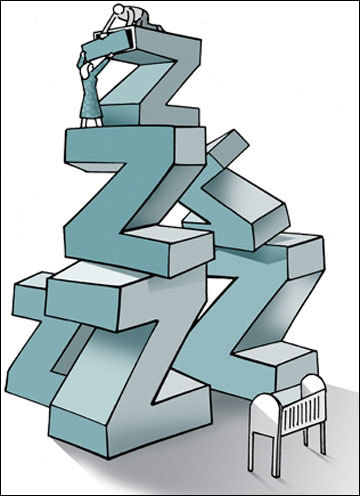 Ashley Blake
Ashley Blake